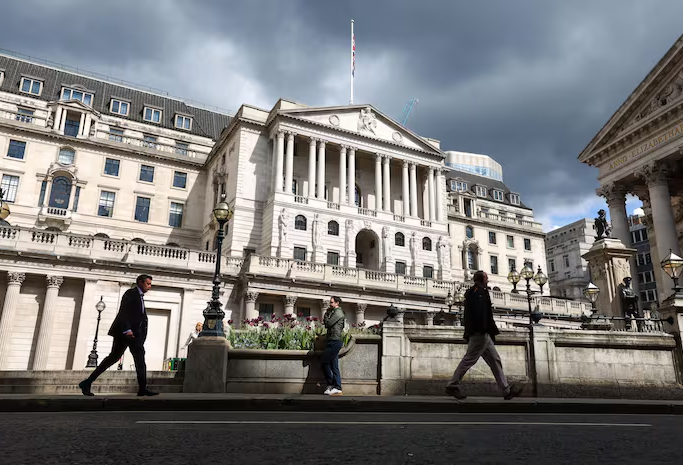UK wage growth slowed but remained at a level that would normally be too high for the Bank of England to keep inflation at its 2% target.
This adds to doubts about the possibility of an interest rate cut in a fortnight’s time. Profits excluding a key measure of inflationary pressure for the Bank of England in the form of bonuses rose 5.7 per cent in the three months to the end of May from a year earlier, official data showed.
This is the slowest growth in basic pay since the summer of 2022, when employers struggled to raise wages to recruit and retain staff amid a shortage of candidates. Sterling and UK interest rate futures were little changed after the data was released, Yael Selfin, Chief Economist at KPMG UK, noted.
A modest slowing in pay growth offers some good news for those looking for a rate cut in August. But with annual pay growth excluding bonuses at 5.7%, the Bank of England may be unwilling to risk an August cut in rates before the labour market has cooled sufficiently.
Total earnings, including bonuses, also rose by 5.7% over the period. In the three months to April, regular pay rose at an annualised rate of 6.0%, while total earnings increased by 5.9%.
The Bank of England (BoE) is due to make its next rate announcement on 1 August. Following the release of stronger-than-expected inflation data on Wednesday, investors put the probability of a first cut since 2020 at around one in three.
Cooled labour market
The survey, conducted by the Office for National Statistics (ONS), showed a bias against older people who were more likely to complete an online survey. Partial responses were another problem, he added.
While we further develop the TLFS, we will continue to use the LFS as our lead measure of the labour market.
The survey is a source of data on employment, unemployment, and inactivity. Its problems have made it difficult for the BoE to measure inflationary headwinds in the labour market.
Thursday’s data showed some further signs of cooling in the British labour market, with vacancies falling by 30,000 between April and June. This was the 24th consecutive fall, although it remained almost 12 per cent higher than before the COVID pandemic.
The unemployment rate, according to the LFS survey, which is being phased out, is holding steady at 4.4 per cent.
